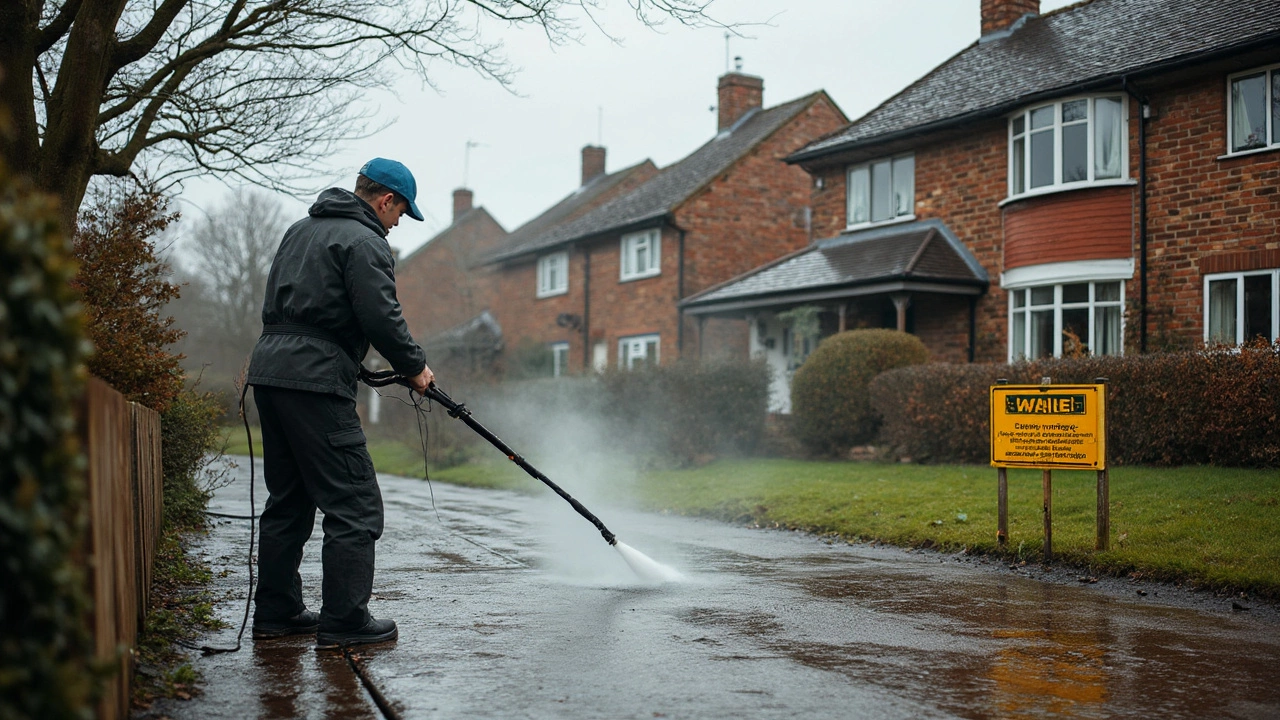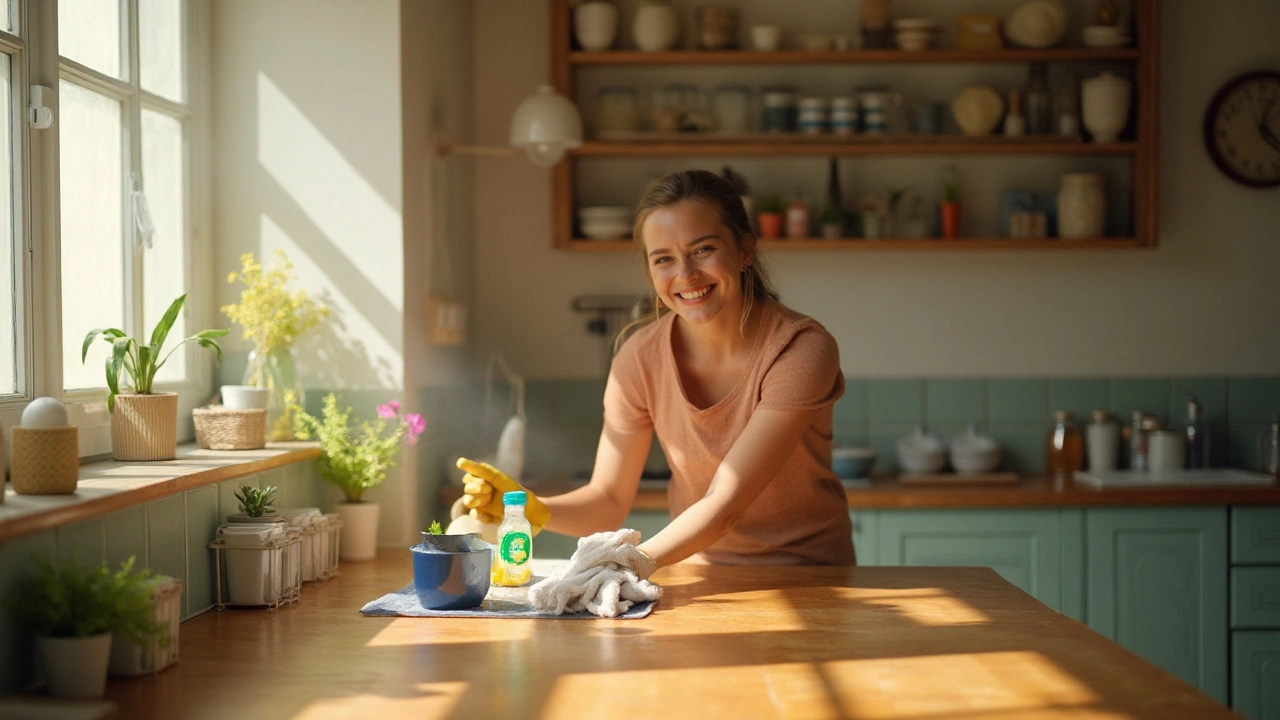Cleaning Mistakes You’re Probably Making (and How to Stop)
Ever wonder why a room still looks dull after you’ve spent ages scrubbing? Most of the time it’s not the effort – it’s the method. Below are the everyday blunders that keep cleaning from delivering real results, plus quick fixes you can start using today.
Wrong Cleaner, Wrong Surface
What you spray on glass can ruin hardwood, and a kitchen degreaser on marble leaves white spots. Before you reach for a bottle, ask yourself: does this surface need a pH‑neutral cleaner or something stronger? For windows, a mix of water, a splash of vinegar, and a microfiber cloth does the trick without streaks. For stone countertops, stick to a dedicated stone cleaner or a mild dish soap diluted in water. Using the right product not only cleans better, it protects the material from long‑term damage.
Skipping the Prep Work
Jumping straight into the deep clean often means you’re just moving grime around. Dust first, wipe down surfaces, and let them dry before you tackle the tougher spots. A quick dust‑off with a dry microfiber cloth removes loose particles that would otherwise turn a mop into a mud‑slinger. When you mop, use a bucket with clean water – re‑using filthy water just spreads germs and stains.
Another common oversight is ignoring the power of warm water. Cold water leaves soap residue on floors and countertops, making them look dull. Warm water helps dissolve oils and speeds up drying, so you get a shinier finish with less effort.
Over‑Relying on One‑Size‑Fits‑All Hacks
Vinegar, baking soda, and Dawn dish soap are fantastic household allies, but they aren’t magic bullets for everything. Vinegar is great for mineral build‑up on glass and tiles, yet it can damage grout or certain finishes. Baking soda works as a gentle abrasive for kitchen grime, but you’ll need a stronger degreaser for baked‑on oven grease.
If you try to clean a stubborn oven mess with just vinegar, you’ll end up scrubbing longer without results. Instead, combine baking soda paste (baking soda + water) for the initial soak, then finish with a commercial oven cleaner for the toughest spots. This two‑step approach saves time and keeps your cookware safe.
Ignoring the “Cleaning Schedule”
Most people think a deep clean once a month is enough. In reality, regular small‑scale cleaning prevents buildup and reduces the need for heavy duty scrubbing. Set a simple weekly schedule: dust Monday, vacuum Tuesday, bathroom wipe‑down Wednesday, and so on. When you keep up with this rhythm, you’ll notice fewer streaks on windows and less stubborn grime on kitchen surfaces.
For homes with pets, a quick spot‑clean on pet hair and urine stains prevents odors from setting in. A mixture of white vinegar and water applied promptly to a fresh urine spot neutralises the smell before it seeps deep into carpet fibers.
Using the Wrong Tools
A cheap rag might feel soft, but it leaves lint on glass and can scratch delicate finishes. Microfiber cloths, on the other hand, trap dust and glide over surfaces without streaking. When tackling floors, a mop with a spin‑dry bucket removes excess water, preventing water‑logged floors that can warp wood.
Even pressure washing can go wrong. Point the spray too close to siding or use excessive pressure, and you’ll strip paint or cause leaks. Keep the nozzle at a safe distance (about 12‑18 inches) and use a wide‑angle tip for an even wash.
By swapping out the wrong tools for the right ones, you’ll see faster, cleaner results and extend the life of your belongings.
Fixing these common cleaning mistakes doesn’t require a massive overhaul—just a few mindful tweaks. Start with the right product for each surface, take a moment to prep, and follow a simple schedule. You’ll notice a brighter home, less elbow grease, and fewer “why isn’t this working?” moments. Happy cleaning!

The Downsides of Pressure Washing: What You Need to Know
Pressure washing can be a quick way to clean surfaces, but it comes with its own set of drawbacks. From potential property damage to safety risks, it's important to weigh the cons before you start blasting away dirt. Understanding what could go wrong helps you make smarter choices and avoid costly mistakes. Make sure you're equipped with the right tips to mitigate these issues.
Read More
Avoiding Common Mistakes in Kitchen Cleaning
Diving into kitchen cleaning may seem straightforward, yet many stumble upon common pitfalls. These slip-ups can turn an otherwise simple task into a frustrating ordeal. This article highlights mistakes to avoid while cleaning your kitchen and offers practical tips to clean smarter. Let’s keep your kitchen sparkling without the hassle.
Read More